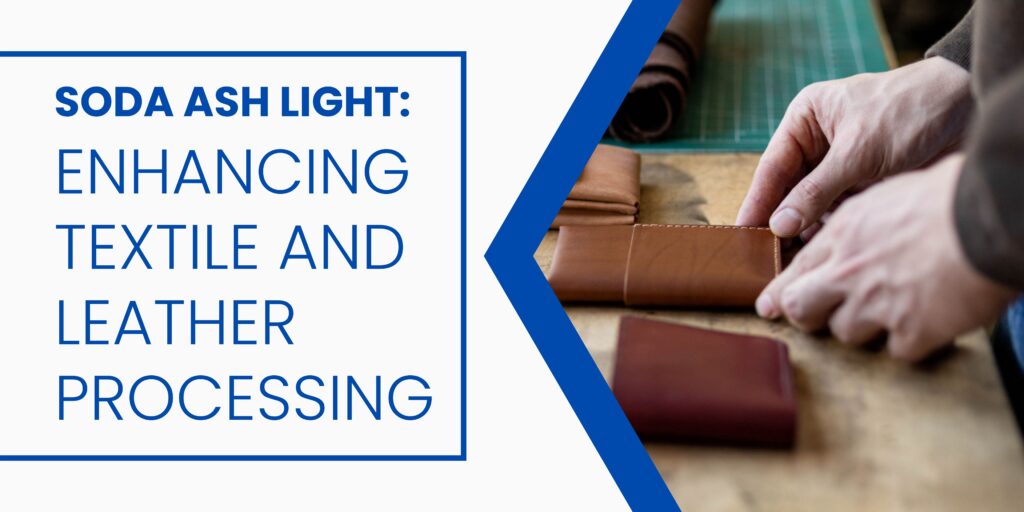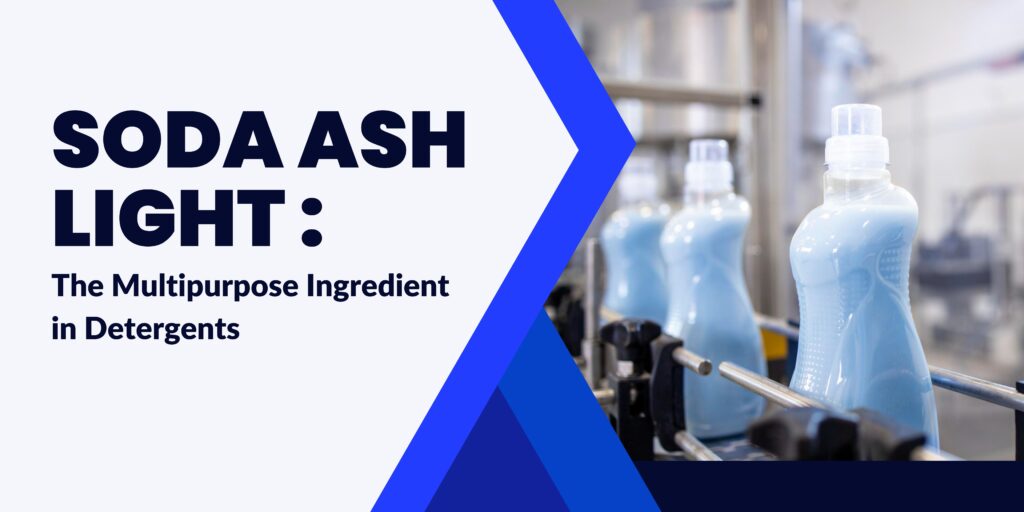
Soda ash, a versatile alkali, plays a pivotal role in numerous industrial applications. In the realm of textiles and leather processing, soda ash light, with its distinct properties and advantages, holds a crucial position. This article delves into the specifics of soda ash light and how it significantly enhances textile and leather processing.
Understanding Soda Ash Light
Soda ash, chemically known as sodium carbonate (Na2CO3), exists in two primary forms: dense soda ash and light soda ash. The difference lies in their respective densities, with light soda ash being less dense. Light soda ash is an anhydrous white powder, soluble in water, and possesses essential alkaline properties.
The production of soda ash light involves processes such as the Solvay process, trona ore refining, and the Hou’s process. The Solvay process, a widely adopted method, transforms sodium chloride and limestone into soda ash through chemical reactions, yielding both dense and light forms.
Properties and Composition of Soda Ash Light
Soda ash light consists of sodium carbonate in its anhydrous form. Its chemical composition includes sodium oxide (Na2O) and carbon dioxide (CO2). The absence of water molecules in soda ash light gives it the “light” designation, resulting in a lower density compared to dense soda ash.
The alkaline nature of soda ash light is essential for its application in textile and leather processing, where it aids in various chemical reactions and treatments.
Soda Ash Light in Textile Processing
Dye Fixation and pH Regulation
In textile dyeing, maintaining the appropriate pH level is crucial for optimal dye fixation. Soda ash light acts as a pH regulator, ensuring that the dye adheres effectively to the fabric. The alkalinity of soda ash light helps in this fixation process.
Removal of Impurities
During textile processing, impurities and unwanted substances can hinder the dyeing process. Soda ash light helps remove these impurities, enhancing the dye absorption and resulting in a vibrant and uniform color.
Treatment of Fibers
Soda ash light is used to pretreat fibers, preparing them for dyeing. This treatment improves the absorption of dyes and enhances the overall dyeing efficiency.
Print Paste Preparation
In printing operations, soda ash light is utilized in the preparation of print pastes. These pastes are crucial for creating intricate designs on textiles.
Soda Ash Light in Leather Processing
Tanning Process
In leather tanning, soda ash light is used to control the pH during various stages. It assists in the swelling of the hides and promotes effective penetration of tanning agents.
Neutralization and Cleaning
Soda ash light is employed to neutralize the acidity left over from the tanning process. Additionally, it helps in cleaning and degreasing the hides.
Dyeing and Finishing
Similar to its role in textile dyeing, soda ash light is involved in the dyeing of leather. It aids in achieving the desired color and finish for the leather products.
Advantages of Using Soda Ash Light
Cost-Effectiveness
Soda ash light is cost-effective, making it an attractive choice for textile and leather processing operations, especially in large-scale production.
Efficiency and Consistency
The consistent properties of soda ash light ensure uniform results, providing a reliable option for achieving desired outcomes in dyeing, tanning, and finishing processes.
Environmentally Friendly
Soda ash light, when used responsibly and in the appropriate quantities, is considered environmentally friendly. It is biodegradable and does not pose significant environmental risks when handled with care.
Conclusion
Soda ash light, a critical component in various industrial applications, plays a vital role in enhancing textile and leather processing. Its alkaline properties, cost-effectiveness, and efficiency make it a preferred choice for dye fixation, pH regulation, and impurity removal in textile operations. In leather processing, it aids in tanning, neutralization, and dyeing, ultimately contributing to the production of high-quality leather products. Understanding the benefits and applications of soda ash light is essential for optimizing its usage and ensuring the desired outcomes in these industries.




